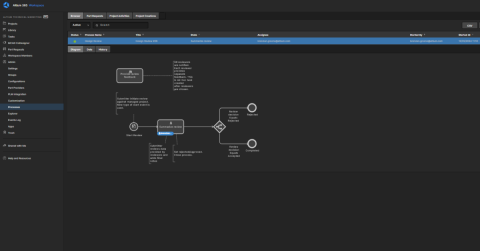Product Lifecycle Management (PLM) Training
01- Introduction to PLM Integration
This comprehensive video series will guide you through establishing seamless connections between your workspace and PLM system, creating a unified digital thread for your product development lifecycle. PLM integration transforms how your engineering team manages component data, project information, and manufacturing outputs by synchronizing critical design data between the workspace and your PLM system.
This integration eliminates data silos, reduces manual data entry, and ensures your entire organization works from a single source of truth. This training series covers five essential areas that will get your PLM integration up and running effectively. After completing this training, you will have the knowledge and practical skills to implement a robust PLM integration that enhances collaboration, reduces errors, and accelerates your product development process.
02.1 - Creating and Editing PLM Configurations
In this video, we'll demonstrate how to create and edit PLM Integration configurations, establishing the connection between your workspace and PLM System. A proper API connection is the foundation for all subsequent PLM integration activities.
Creating a PLM integration configuration is essential to define the connection, components, synchronization, project creation and project publishing settings. This configuration is the bridge that connects your workspace to your PLM system. Taking the time to properly establish and test this connection will ensure smoother operations as you expand your integration.
03.1 - Configuring Component Synchronization
Component synchronization enables bidirectional creation and updating of components including their parameters and part choices. In this video, we will demonstrate how to configure the synchronization of components in your workspace with the parts in your PLM system. By implementing the to Altium and from PLM sync tools to map global parameters for the component types, users are able to keep projects up to date.
03.2 - Performing Component Synchronization
In this video, we will demonstrate how to perform automatic and manual component synchronization, monitor synchronization statuses, review results, and access important information to troubleshoot any issues. This ensures accurate data flow between the workspace and your PLM system.
Components, parameters, and part choices can be synchronized between your workspace and PLM system at regular time intervals during project releases, or manually, at any time. Regularly monitoring the synchronization status of your component library ensures a smooth, consistent flow of component data between your workspace and PLM system, providing your organization with a single source of truth for component information.
4.1 - Activating Workflows
This video explains the different workflows related to PLM integration and demonstrates how to activate workflows from templates. Workflows are a requirement for all project related PLM activities, including automatic project creation in PLM and project publishing from Altium to PLM during project release or post project release. A workspace includes four default workflow templates related to PLM. Each workflow is discussed in this video and a workflow process is demonstrated for the user.
05.1 - Configuring Project Creation and Publishing
In this video we will demonstrate how to configure project publishing settings that determine how Altium projects are represented in your PLM system including the assignment of PLM numbering schemes to the items, mapping of project parameters that are exchanged, and change order creation. Project publishing configuration is used for PLM project creation and project publishing workflows.
If project creation workflow is not utilized, project items will be generated in your PLM system at the time of publishing. PLM items for project variance are created at the time of project publishing. Before getting started with project publishing, it is important to determine the number and type of items that will be created in your PLM system, their relationships with each other, and the files that will be published to each item.
05.2 - Configuring Publishing Templates
This final video in the PLM Integration Series explores XML-based Publish Templates that control the files that are sent to a PLM system and how they are structured. It covers the very basics of extensible markup language and regular expressions used in the publish templates.
After viewing this video and the others in this tutorial, users will have the knowledge to connect a design environment with manufacturing systems, creating a digital thread that ensures data consistency throughout the product development lifecycle. By following these procedures, users can customize these configurations to match their organization’s specific needs and processes.









